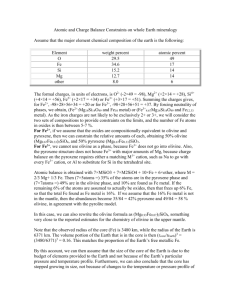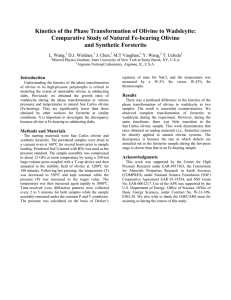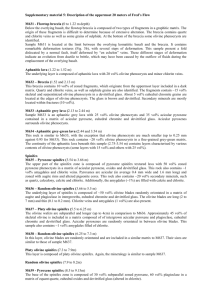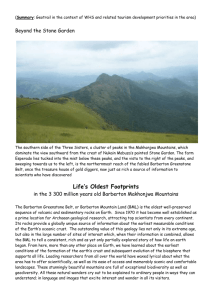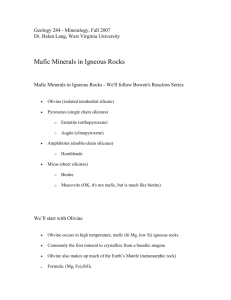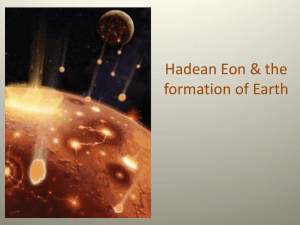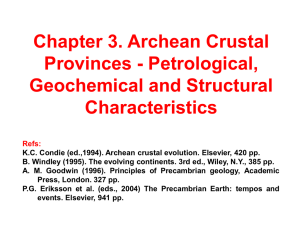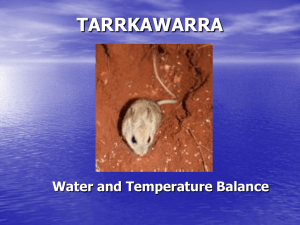presentation file
advertisement
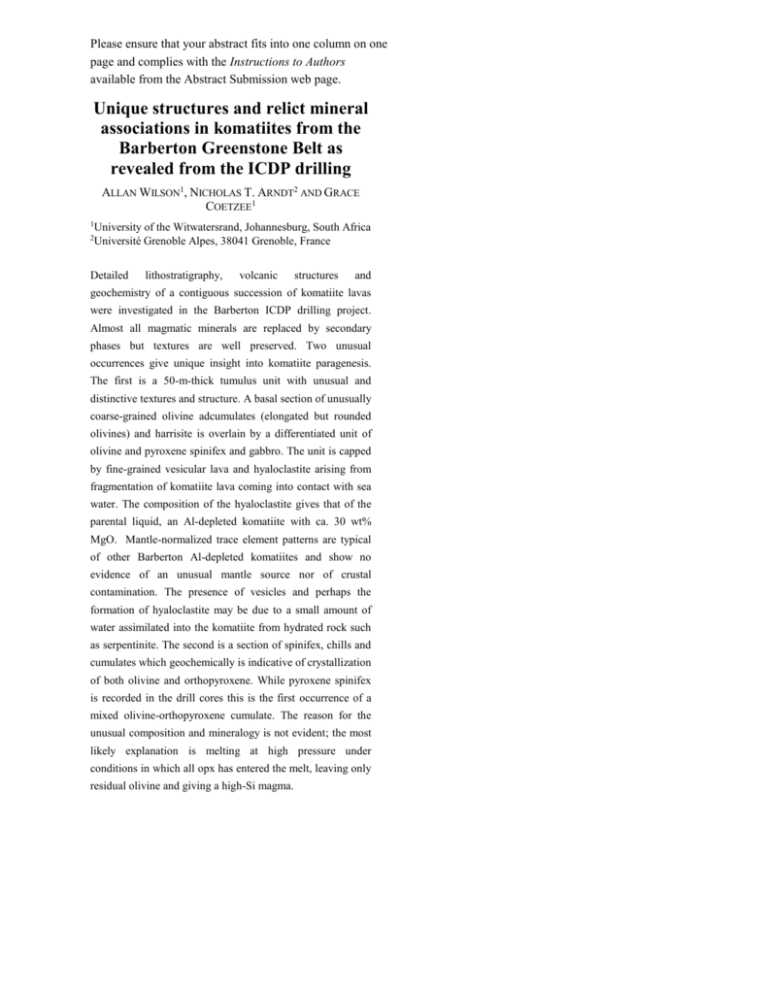
Please ensure that your abstract fits into one column on one page and complies with the Instructions to Authors available from the Abstract Submission web page. Unique structures and relict mineral associations in komatiites from the Barberton Greenstone Belt as revealed from the ICDP drilling ALLAN WILSON1, NICHOLAS T. ARNDT2 AND GRACE COETZEE1 1University 2Université of the Witwatersrand, Johannesburg, South Africa Grenoble Alpes, 38041 Grenoble, France Detailed lithostratigraphy, volcanic structures and geochemistry of a contiguous succession of komatiite lavas were investigated in the Barberton ICDP drilling project. Almost all magmatic minerals are replaced by secondary phases but textures are well preserved. Two unusual occurrences give unique insight into komatiite paragenesis. The first is a 50-m-thick tumulus unit with unusual and distinctive textures and structure. A basal section of unusually coarse-grained olivine adcumulates (elongated but rounded olivines) and harrisite is overlain by a differentiated unit of olivine and pyroxene spinifex and gabbro. The unit is capped by fine-grained vesicular lava and hyaloclastite arising from fragmentation of komatiite lava coming into contact with sea water. The composition of the hyaloclastite gives that of the parental liquid, an Al-depleted komatiite with ca. 30 wt% MgO. Mantle-normalized trace element patterns are typical of other Barberton Al-depleted komatiites and show no evidence of an unusual mantle source nor of crustal contamination. The presence of vesicles and perhaps the formation of hyaloclastite may be due to a small amount of water assimilated into the komatiite from hydrated rock such as serpentinite. The second is a section of spinifex, chills and cumulates which geochemically is indicative of crystallization of both olivine and orthopyroxene. While pyroxene spinifex is recorded in the drill cores this is the first occurrence of a mixed olivine-orthopyroxene cumulate. The reason for the unusual composition and mineralogy is not evident; the most likely explanation is melting at high pressure under conditions in which all opx has entered the melt, leaving only residual olivine and giving a high-Si magma.
